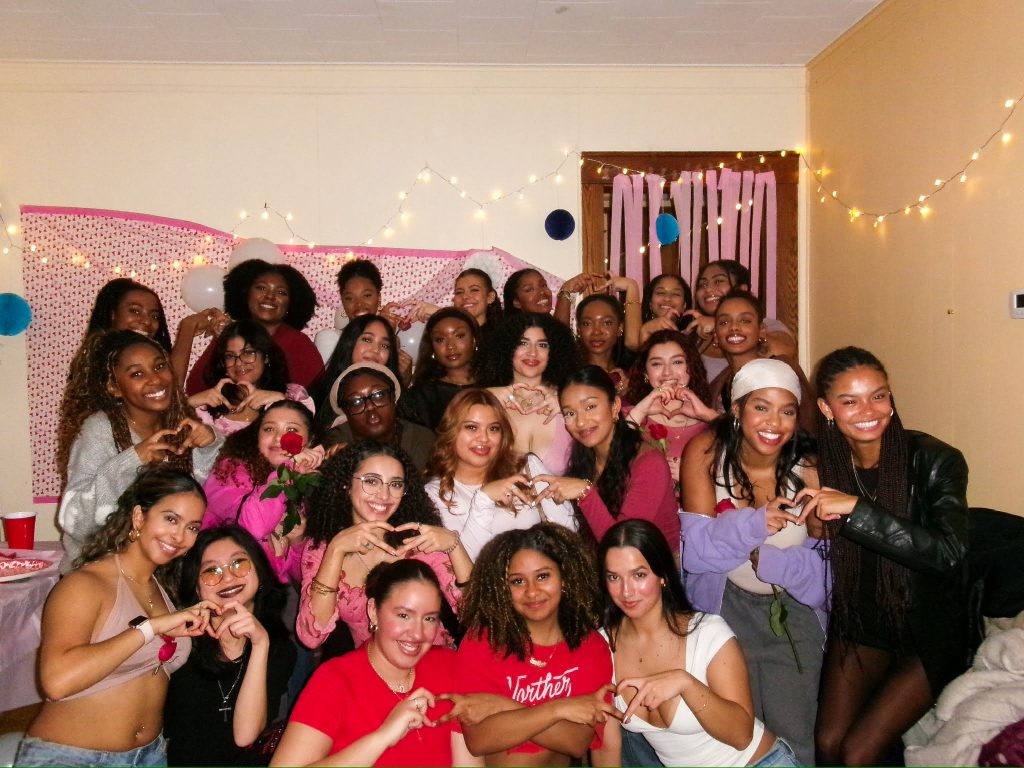Established in 2007, Powerful Ladies Striving to Elevate, or PULSE, was created from a vision to give women of color a safe space to come together and build long-lasting relationships, discuss career growth opportunities and empowerment, share advice, and learn and constantly adapt with one another.
Nearly two decades later, PULSE is continuing to provide this sanctuary through bonding sessions, informative programs like its annual reproductive rights fair and breast cancer awareness walk, community service, campus leadership initiatives and professional networking events.
At the organization’s core, where these values are tethered, lies “Heartbeat of PULSE Embodied.” Also known as “HOPE,” it is a monthly magazine that the publication coordinator designs to foster meaningful conversations and inform the general body of campus resources and upcoming PULSE events, creating a vibrant platform for diverse voices to be heard and represented.
The publication began in 2011 when Shanel Boyce ‘14, MSW ‘18 amended the organization’s constitution to include the role of publication coordinator. Arlene Arisme ‘14, MSW ‘18, was the first person to take on the role and played a pivotal role in shaping the position into its current form by designing flyers and other materials. From the beginning, HOPE served as a platform for conversations on important social causes, and the first issue showcased this necessity for open dialogue by including a piece that addressed abortion rights from both female and male perspectives.
Arianna Garcia Rasuk, PULSE’s publication coordinator and a junior majoring in environmental science, described what a current “HOPE” publication looks like.
“A typical HOPE Publication is vibrant and engaging, featuring plenty of eye-catching graphics and photos of our e-board and general body members,” Rasuk wrote in an email. “It often includes a Women Who Lead section, highlighting inspiring women in the Binghamton University community who embody our core values. We also cover current events affecting women of color, from health and social issues to fashion trends. Every publication is designed to be both informative and visually appealing.”
In her position, Rasuk brought a new element to the magazine — a PULSE Press section, where the E-Board and interns can discuss and share the media they’ve loved that month. This can include movies, books, TV shows, music and more. By implementing a personal touch to each issue, Rasuk hopes it will continue to strengthen the sisterhood of PULSE and offer an engaging aspect for readers.
“I’ve also incorporated games and dynamic, ever-changing sections to ensure each issue offers a fresh and unique experience of girlhood,” she wrote.
Rasuk said that one of her favorite spreads she put together was the January 2025 issue, which was curated to mimic a sticker book. Described as a personal passion project, the issue reflects an animated and maximalist flair. Readers were invited to learn the fashion history behind Black women on the runway during the 1973 Battle at Versailles fashion show and discover ways to add texture and statement pieces to their personal style.
“I usually brainstorm themes during school breaks and plan my schedule accordingly,” Rasuk wrote. “I draw inspiration from other magazines, especially early 2000s editions, and then gather diverse content to fill each issue — such as artwork, current events, and student shoutouts. Each issue is carefully curated to be engaging, relevant, and reflective of our community.”
For future issues, Rasuk wants to add more interactive elements like quizzes, polls and even reader submissions to elevate the magazine’s connection to its readership. She hopes to further grow this connection by including coverage of issues that affect all women of color from a range of cultural backgrounds and involve them in conversations relating to health, activism and lifestyle goals.
“I want BU students, especially Black women and women of color, to feel seen, inspired, and connected when reading HOPE magazine,” Rasuk wrote. “Whether it’s through highlighting powerful women, discussing current issues, or sharing fun media recommendations, each issue is meant to celebrate our sisterhood and spark meaningful conversations.”
“We aim to create a space where women of color feel included, valued, and always welcomed,” she added. “It can be tough at a predominantly white institution, but HOPE is here as a reminder that we’re stronger when we stick together. Ultimately, I hope it feels like a place where students can learn, reflect, and embrace all the diverse facets of girlhood.”
To find the latest “HOPE” publications, check out the organization’s website.



